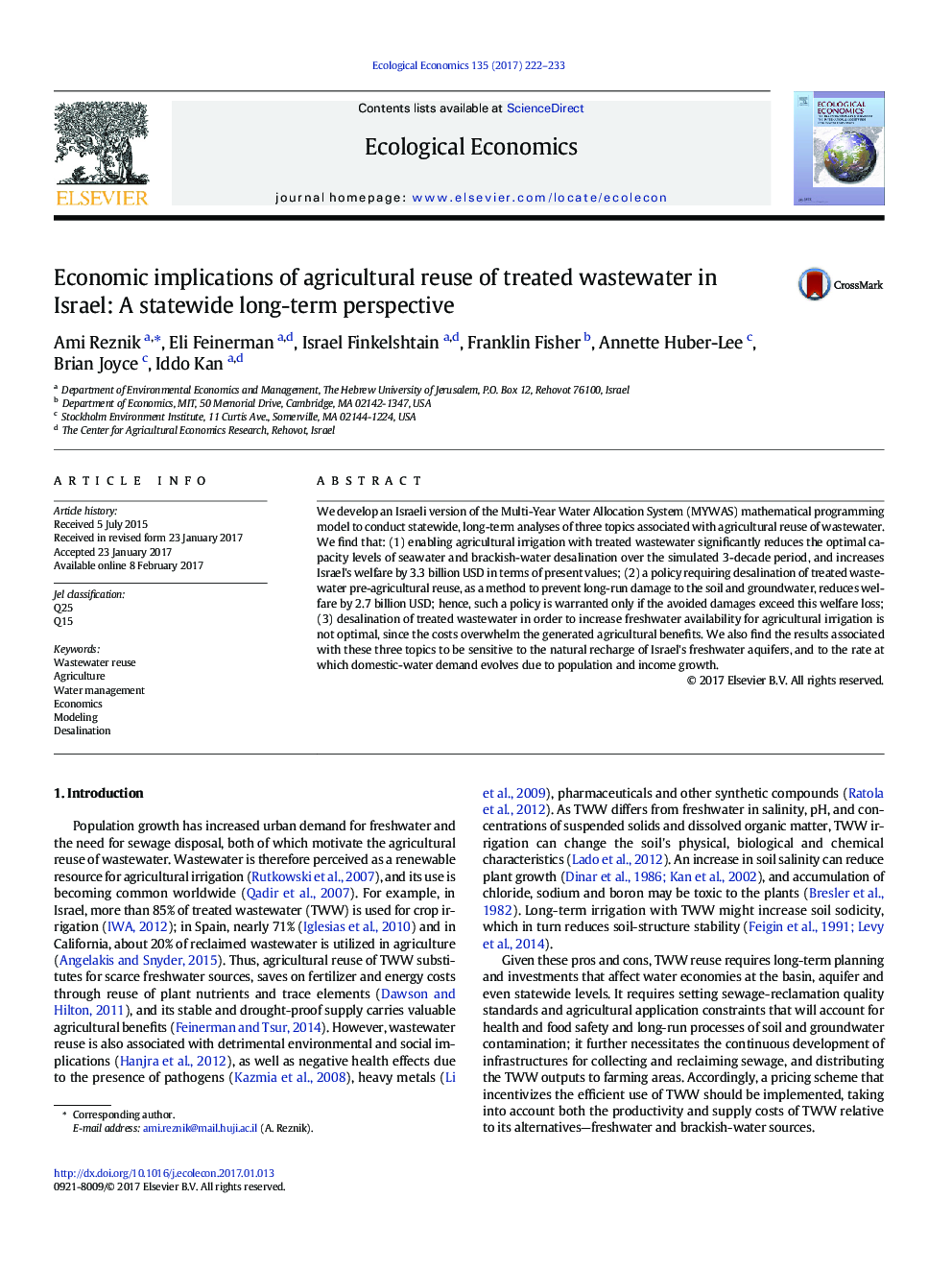| Article ID | Journal | Published Year | Pages | File Type |
|---|---|---|---|---|
| 5048781 | Ecological Economics | 2017 | 12 Pages |
â¢We assess welfare effects of treated wastewater reuse in agriculture.â¢We apply a dynamic non-linear mathematical programming optimization model.â¢We use detailed spatial-economic, and hydrological data.â¢Irrigation with treated wastewater contributes 3.3 billion USD in terms of present value.â¢Avoiding damages from treated wastewater irrigation is capped at 2.7 billion USD.
We develop an Israeli version of the Multi-Year Water Allocation System (MYWAS) mathematical programming model to conduct statewide, long-term analyses of three topics associated with agricultural reuse of wastewater. We find that: (1) enabling agricultural irrigation with treated wastewater significantly reduces the optimal capacity levels of seawater and brackish-water desalination over the simulated 3-decade period, and increases Israel's welfare by 3.3 billion USD in terms of present values; (2) a policy requiring desalination of treated wastewater pre-agricultural reuse, as a method to prevent long-run damage to the soil and groundwater, reduces welfare by 2.7 billion USD; hence, such a policy is warranted only if the avoided damages exceed this welfare loss; (3) desalination of treated wastewater in order to increase freshwater availability for agricultural irrigation is not optimal, since the costs overwhelm the generated agricultural benefits. We also find the results associated with these three topics to be sensitive to the natural recharge of Israel's freshwater aquifers, and to the rate at which domestic-water demand evolves due to population and income growth.
